Milan is one of the world fashion's capital.
But the city is not only a shopping hotspot. Milan also boosts an unbeatable night life, plenty of cultural events and inviting traditional restaurants.
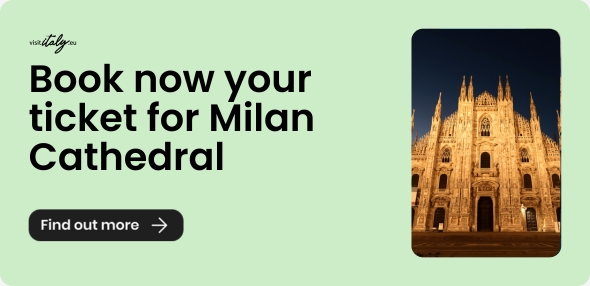
Milan like a local
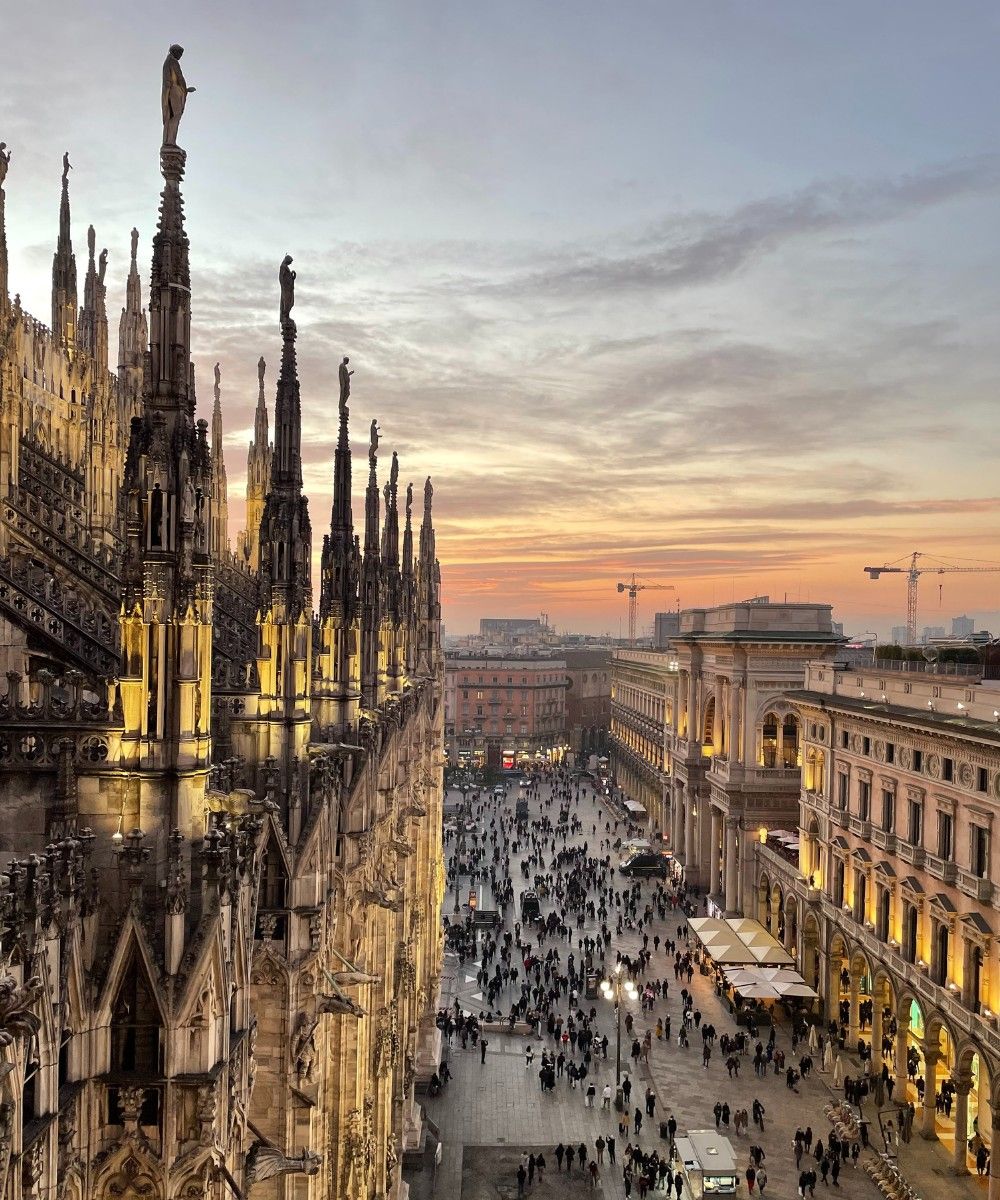
The Milanese live in a city where modernity and tradition come together to create an interesting reality, probably the most European city in Italy.
We shortlisted a few activities, areas to shop and places to see to make you enjoy the city like a real local.
Read this article to discover the 10 things to do in Milan to experience the city just like the Milanese. You'll find out the best places to shop, where to spend a night out and the unmissable traditional foods.
Visit Milan with Milan city Pass10. Explore the Navigli markets
Few people knows that Milan is considered a "water city", as it is lapped or crossed by five rivers and five canals called "navigli".
The Navigli are one of the most iconic symbols of Milan, an attraction for locals and tourists looking for nightlife, culture, good food or simply relaxation.
But the Navigli are also a fascinating place for shopping in the numerous markets populating the canal banks, making this area of the city unique.
The most famous is certainly the Mercatone dell'Antiquariato (the "Antiques Market") on the Naviglio Grande, a real city happening taking place on the last Sunday of the month. It is very popular with locals buying from the vendors from Viale Gorizia to the Via Valenza bridge… almost 2 km of stalls to find a good deal!
This market is a paradise for those who love antiques: the vendors sells any type of antique object, accessories, jewellery, paintings, wooden furniture, ceramics, books, old records and much more.
As for food, the Navigli Agricultural Market (open on Saturdays) and the Ticinese Municipal Market (Monday to Saturday) are very popular among locals.
The Agricultural Market brings the flavours of the countryside to the city by skipping many of the steps in the supply chain, guaranteeing the purchase directly from the farms. Dive into this kaleidoscope of flavours and colours to buy fruit and vegetables but also meats, freshly baked bread, typical Lombard products and wines. Even if you don't have to buy anything, it's worth exploring the market to peek inside the Milanese shopping cart.
Finally, if you prefer flea markets, do not miss the Fiera di Sinigaglia every Saturday (more oriented towards vintage and military memorabilia, with a touch of punk/metal and alternative cultures) and on Sundays the Porta Genova Market (where anyone can sell, with products ranging from the Kinder Egg surprise collectibles to old CDs).
9. Enjoy a gig or a theatrical show
Milan is a hotbed of events and shows in constant turmoil.
It's easy for the Milanese to spend a night out watching a show: they just have to browse through the rich program of events available and choose from cabarets, theatre, concerts and dinner shows.
It's almost impossible to get bored.
For example, Milan is the perfect Italian city if you love opera, ballet and classical music, thanks to the wonderful Teatro della Scala.
The "Scala" has seen the performances of the best international artists in its 200+ years of history. Check the schedule of this prestigious theatre and book your tickets in advance - it's worth arriving before the shows to explore the opulent halls and see the museum.
Milan is one of the city offering more concerts in Italy, a true paradise for gig lovers (especially rock and alternative). The majestic San Siro stadium hosts thousands of people for great concerts (recently Vasco Rossi, Depeche Mode and Pearl Jam), but Milan also boasts other excellent venues to enjoy a gig: Alcatraz, Fabrique, or the nice Mediolanum Forum of Assago.
But the locals are not satisfied with only music and theatrical events. For this reason the city also offers alternative evenings, thanks to its numerous clubs hosting dinner shows with circus and burlesque shows (such as Lo Stacco), goliardic taverns combining cabaret and traditional food (Osteria Bel Sit), chic clubs with contortionists, acrobats and DJ sets (like Maison Milano) and much more.
In Milan, visitors will also find special cocktail bars, in the wake of jazz bars (such as the Bachelite cLab or the Lu’bar) or speakeasy-style (we recommend the Sacrestia Farmacia Alcolica).
In short, just choose a theme, do a little research and you will see that it is all too easy to enjoy the "evening of a lifetime" in Milan, side by side with the locals.
Visit teatro della Scala8. Milan like a local: eat traditional food in a trattoria
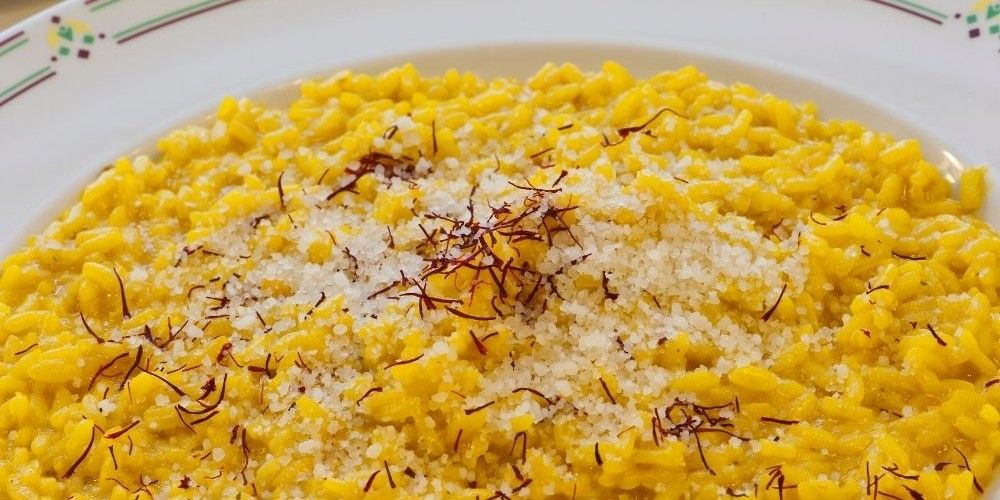
A colourful portion of risotto alla milanese.
Great food is always at hand in Milan.
To appreciate traditional cuisine, look for a trattoria or tavern that exudes "Milanese style" from the menu.
There is something for everyone, such as tasty risottos, pastas, stews, boiled and braised meats and much more.
For a traditional dinner in a trattoria, don't miss one of the three great Milanese classics: saffron risotto, ossobuco or cutlet. All three of these dishes are in fact known as "Milanese style".
Risotto con zafferano ("with saffron") is perhaps the most representative dish of Milanese cuisine.
The simplicity of the ingredients and the intense yellow color given by the saffron pistils make it unmistakable. This tasty risotto is topped with plenty of butter and cheese and boasts a soffritto made with beef marrow.
Alternatively, order another Milanese classic: the casoeûla. It is a nutritious (and caloric) stew made with cabbage and leftovers from pork slaughter, such as sausage and ribs. Casoeûla is a traditional peasant dish with a strong flavour, perfect to fight the cold Milanese winter.
The cotoletta alla Milanese (a large veal cutlet with the bone) and ossobuco (cross-cut veal shanks braised with vegetables) are two excellent, very local alternatives.
If you are looking for hearty mountain food, keep your eyes peeled for restaurants cooking polenta, perhaps served with gorgonzola, mushrooms and soppressa.
Finally, for a uber-Lombard dinner, find one of the many taverns serving food from Valtellina (like "Sciatt A 'Porter" or "Stelvio", for example) and fill your stomach with a rich plate of pizzoccheri. Pizzoccheri are a kind of grey tagliatella made with buckwheat and topped with cabbage, potatoes and casera cheese… increadibly good!
7. Shop like a local
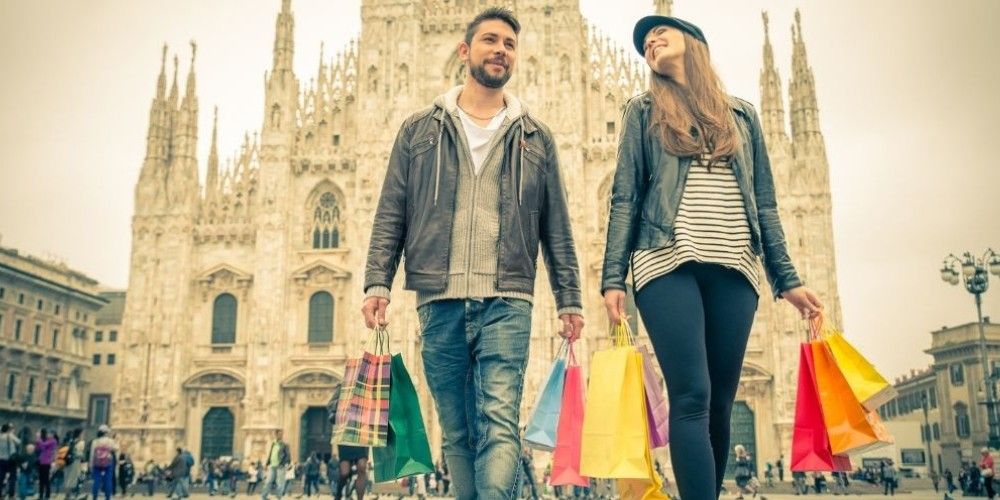
Milan is one of the world fashion's capitals. A city that makes style and elegance its trademarks.
Milan is - simply put - a shopping paradise.
It's not only famous for its luxury shopping and unrivalled brands (like Prada or Armani), but it offers many opportunities for value and price shoppers.
Let's see where the Milanese shop and what are the best shopping areas of the city for high-quality products, top-notch tailoring and good prices.
To shop like a local, get off the main touristic routes around the Duomo.
Start from Corso Magenta (with stylish independent shops) or Corso Buenos Aires (one of the longest shopping streets in Europe), then check Corso Vittorio Emanuele II (full of high-end clothing shops lined up under the arcades). Via Torino is also worth visiting, with more affordable shops attracting young people, and Corso di Porta Ticinese, near the Navigli, with more alternative boutiques and vintage shops.
For a more luxury-oriented shopping, the place not to be missed is the famous Quadrilatero della Moda, a high-end shopping district with four streets defining its boundaries: Via Montenapoleone, Via della Spiga, Via Alessandro Manzoni and Corso Venezia.
The glittering shop windows attracts crowds of locals and tourists, buying from the best Italian and international brands. You can just indulge in window shopping and enjoy the chic atmosphere.
Despite being in the historic center, La Rinascente is very popular among locals, both for the sheer pleasure of shopping but also to take advantage of the panoramic terrace. Active for almost 150 years, La Rinascente is an icon of Milan: it is one of the best-stocked department stores in Italy with 10 floors dedicated to clothing (luxury and otherwise), accessories and food products.
The Milanese tend to be very demanding when shopping and that is why in the city still survive a number of artisan shops and independent boutiques attracting a detail-oriented clientele.
There are many historical, high-end clothing shops (like Ditta Guenzati or Città di Londra), but also landmark bookshops (Libreria Bocca, active since 1775), toy shops (Nano Bleu), typographies (Ditta Raimondi) or perfumery (Fragrans in Fabula).
6. Enjoy the night life
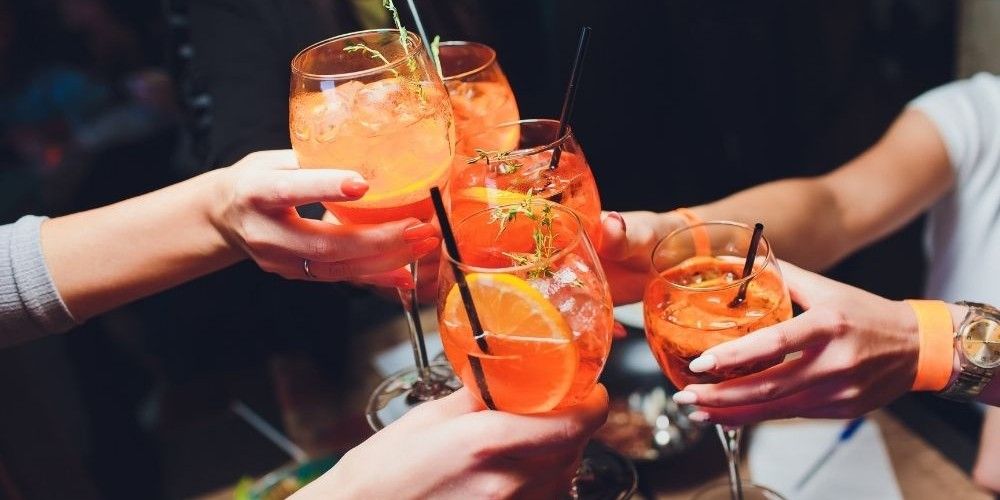
Milan's nightlife is legendary.
There are so many different areas where to enjoy a night out with the locals: at 7pm the Milanese people starts the "second act" of their day.
Aperol Spritz or Negroni during happy hours, clubs open until late at night or signature cocktails made by top-notch barmen: the nightlife in Milan covers every age group and every budget.
The Navigli area is very popular with locals, as they love to spend the night in the bars, beer houses, pubs and restaurants overlooking the canals. There are options for all wallets and for all ages. Since the re-development of the area, the Navigli become the heart of the city's nightlife (head to the Cape Town Cafe or to the Corte dei Miracoli for a nice night out).
For a "younger" experience, join Milan's kids meeting at the Colonne di San Lorenzo, in front of the Basilica. This is an archaeological site with 16 Roman marble columns, now considered a big hotspot for the city's nightlife. Milanese gather here to drink and chat sitting on the base of the columns or they just head to the cool bars in the side streets.
In other areas the experience changes drastically: in Brera, you can find cocktail bars with a bohemian atmosphere, while the triangle between Corso Sempione, Corso Como and Moscova features the trendiest and fashionable soul of Milan, with bistros, glamorous clubs and discos where you queue up to spy on VIPs (such as Hollywood or Tocqueville 13).
On the other side, in the Porta Romana area the average age rises a little and the clubs become more chic and exclusive, with lounge bars serving original cocktails and aperitifs.
Have an aperitif on a boat5. Visit the Brera botanical garden
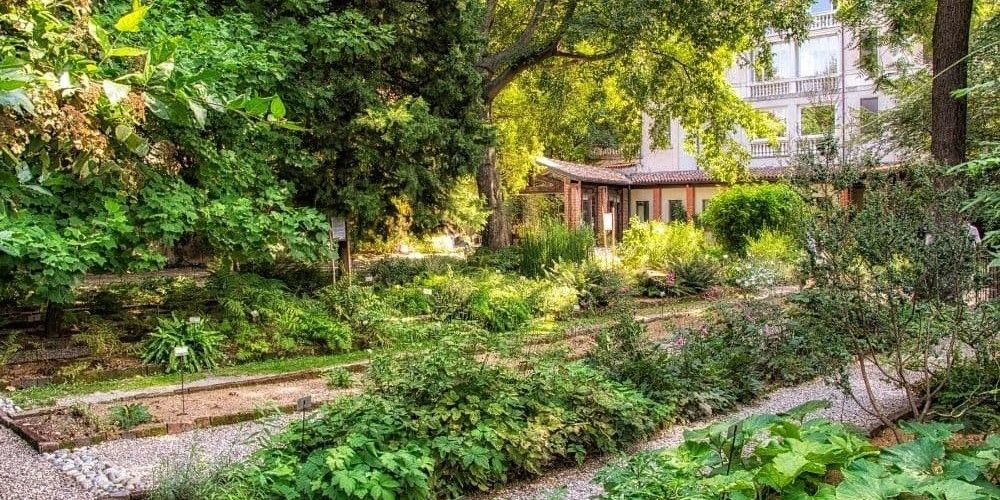
The green paths in the Orto Botanico, a green island in the centre of Milan.
The Orto Botanico di Brera (or "Brera Botanical Garden") is the perfect place to chill in the centre of Milan, away from the noise and traffic.
This ancient historic garden is a tiny corner of paradise, almost an open-air museum.
Built at the behest of Empress Maria Theresa of Austria in 1774, the Botanical Garden has become one of the symbols of the Brera district, together with the famous Pinacoteca and the Astronomical Observatory (the latter is little known but very interesting).
The garden boasts over 300 species of plants spread over 5,000 square meters. It aims to conserve biodiversity and some rare species.
Admission is free, one more reason to take a detour and enjoy a break in the nature, strolling along the centuries-old trees and colourful flower beds.
The symbols of the garden are the two beloved ginkgo biloba, planted more than 2 centuries ago. Here you will also find flower beds with medicinal plants, a beautiful greenhouse and an eighteenth-century tank filled with irises and water lilies.
The garden is housed in the Palazzo di Brera and is very well-kept, with comfortable benches all around and paths surrounded by greenery: every season puts on a different show here!
This botanical garden is a lovely place to relax and read a book, away from the crowds of large city parks (like Parco Sempione): a green island where you can learn about exotic plants and enjoy silence in the very centre of Milan.
4. Do watersports at the Idroscalo
The Idroscalo of Milan is an artificial lake surrounded by a park: it is known as the "sea of the Milan".
Very popular with locals, the Idroscalo is perfect for escaping the sweltering summer heat and enjoying the many activities to do in and out of the water.
If you want to have fun outdoors and practice sports such as rowing, water skiing, SUP, sailing, canoeing, beach volleyball and even surfing and wakeboarding, then the Idroscalo is really worth a visit.
The park and surrounding structures are suitable for families with children, thanks to the playgrounds of the Villaggio dei Bambini (the Children's Village, a free playground with slides and tubes made from recycled materials) and the Dolly Park (with trampolines and ball pools).
The lake was built near Linate airport in the 30s as a stopover for seaplanes. Over time, it has become a hotspot for Milanese out-of-town trips. The lake is fed by spring water and is 5 meters deep at most, measuring 800 thousand square meters in total.
If you need a break from the city, join the Milanese going out of town and take advantage of the many attractions of the park.
You can relax on the beach, swim in the lake in an area safely bordered by buoys or test your surfing skills at the Wakeparadise.
The Wakeparadise is in fact the largest water park in Italy and here you can practice wakeboarding on very long, top-notch facilities with kickers, boxes and rails. There is also a swimming pool with a fantastic artificial wave (static, of course) where you can learn the basics of surfing with an instructor, or where you can refine your technique by learning new tricks.
Finally, good news for dog owners: there are two dedicated areas where your four-legged friends can run free, one with space for them to enter the water.
Take a look at the events that the municipality of Milan is planning at the Idroscalo. In recent years the park has been used for festivals and concerts.
3. Take a walk in the Porta Venezia district
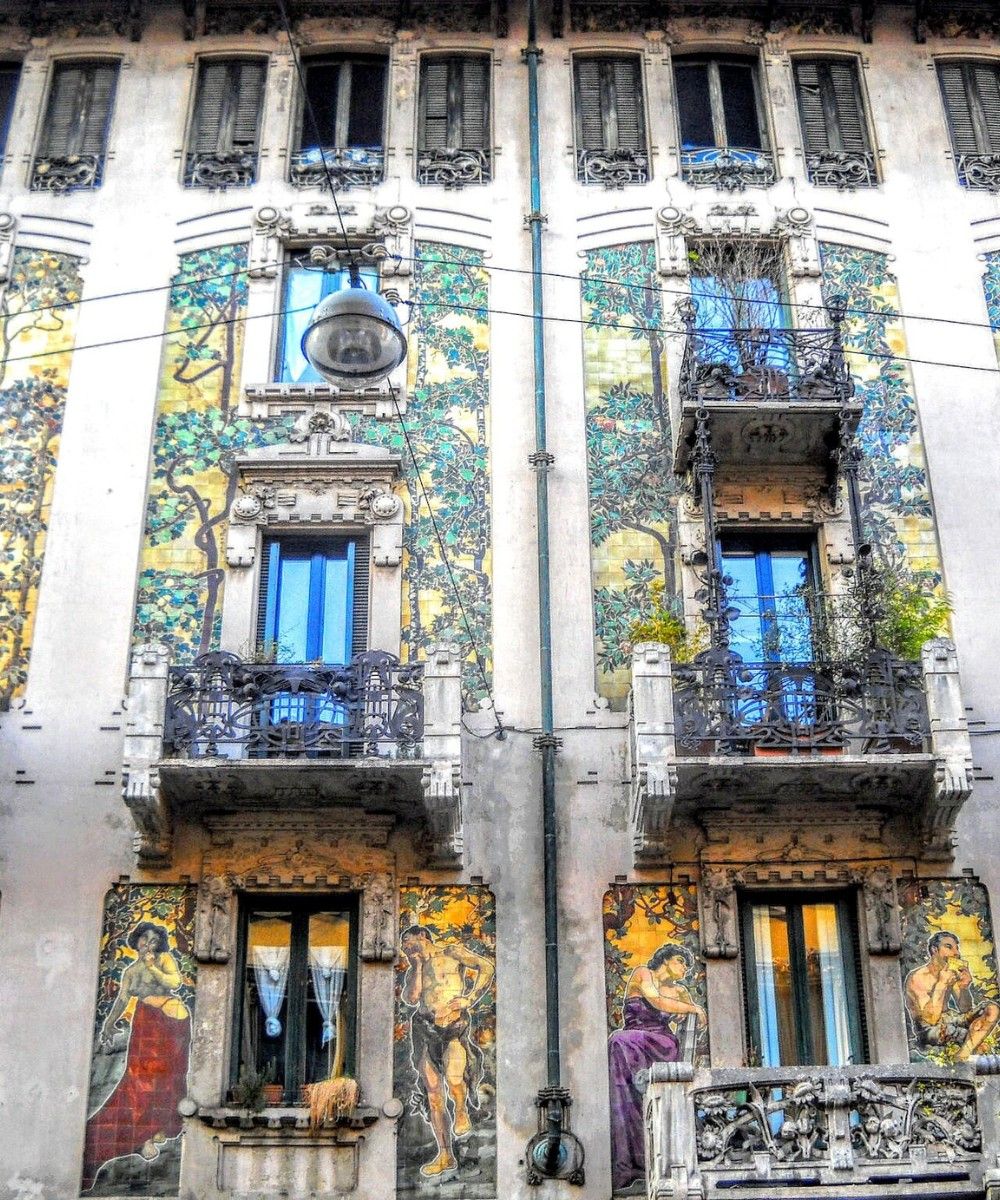
Casa Galimberti- Photo credit: Di Melancholia~itwiki - Opera propria, CC BY-SA 4.0
In reality, the Milanese love this neighbourhood for the shopping, the nightlife and the beauty you can discover when walking around with one's nose in the air!
These are the streets of beautiful Art Nouveau buildings, starting with Palazzo Castiglioni, Milan's first Art Nouveau palace. A short distance away are the marvellous Casa Galimberti and Casa Guazzoni that, with their wrought-iron balconies, majolica tiles and cement decorations in the shape of heads, leaves and flowers, attract the attention of passers-by.
A few steps away, in addition to many bars and restaurants (including ethnic ones) for an excellent aperitif or dinner, we also find the Indro Montanelli Public Gardens, Milan's first public park.
Commissioned by the Austrians in the 1700s and later dedicated to the journalist Indro Montanelli, this is one of the favourite parks of the Milanese, who choose it for jogging, strolling or relaxing while listening to the music of the street musicians who often play here.
Inside the park, you will find century-old trees, statues dedicated to famous people, children's play areas, the Planetarium and even outdoor bars and kiosks.
A stroll through Porta Venezia is a perfect match between art and entertainment.
2. Visiting a house museum

Photo credit: Casa Bagatti Valsecchi Facebook page
In the centre of Milan, we visit hohave the opportunity to visit house museums, a Milanese artistic and cultural heritage. These elegant buildings tell us the story of the families that founded them and reflect the evolution and changes in Milanese society.
We owe these splendid buildings to the generosity of their founders. They made their homes and art collections available to the public, telling their personal stories, artistic taste and Milanese social life.
One of the best known, in Via Gesù, in the heart of Milan, is Casa Bagatti Valsecchi, the neo-Renaissance style home of brothers Fausto and Giuseppe Bagatti Valsecchi. Here we find the numerous works of art collected by the brothers who, in their family home, wanted to combine the refinement of 16th-century Lombardy style dwellings with all the avant-garde elements of the time, such as heating, running water and electricity.
A few steps from Corso Buenos Aires, we can visit the Boschi Di Stefano house-museum of Antonio Boschi and Marieda Di Stefano. Here we can admire part of the couple's extensive art collection: a mix of paintings, sculptures and drawings made between the first decades of the 20th century and the late 1960s. A valuable testimony to the history of 20th-century Italian art.
In Via Mozart, a few steps from Porta Venezia, surrounded by a large garden with a swimming pool, we have Villa Necchi Campiglio, owned by the Necchi Campiglio industrialists. In this refined residence, we find the traditional style of aristocratic houses, combined with details and furnishing elements inspired by the 18th century and Louis XV styles.
These are just 3 of the best-known Milanese house museums, but there are 4 or 5 others in the city, all waiting to be discovered.
Visit the house museum Casa Bagatti Valsecchi1. Take a trip to the Ortica quarter
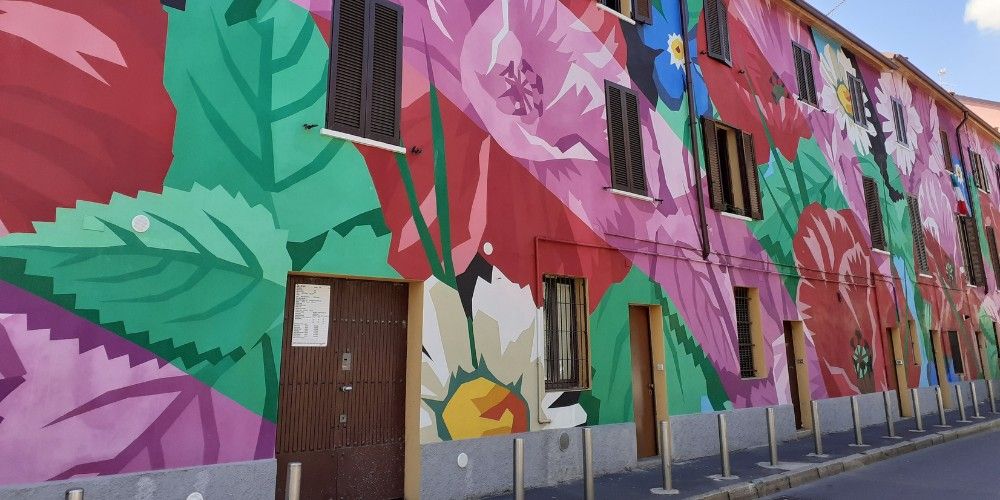
A mural in the Ortica district - Milan
In the eastern part of Milan, close to the better-known Lambrate district, there is a colourful neighbourhood off the tourist track: Ortica.
The Milanese love this neighbourhood, which retains the appearance of the old village with its small church dating back to 1190, the typical railing houses, the small neighbourhood shops where people still call each other by name, and the simple bars that have always attracted many artists.
From being an old farming village, in the second half of the 19th century, with the construction of the railway, Ortica increasingly turned into an industrial district. After the Second World War the fields gave way to factories and numerous railway workers and labourers moved here.
Starting in 2015, thanks to a project realised and desired by the neighbourhood associations and the municipality of Milan, Ortica - quartier Museo was born. The project involves the creation of urban street artwork on the walls of the neighbourhood's buildings. It is a new open-air museum accessible to all, where the murals tell the story of the district and Milan during the 20th century.
Ortica, with its history and evolution, shows us the social and urban changes in Milan.
Strolling through its streets is an engaging way to get to know the city, its history, and its characters. And after the walk, there is no shortage of opportunities to have lunch or a good aperitif in a typical trattoria or osteria!
The Ortica district can be reached by bus 54.
About the author
Written on 16/09/2023


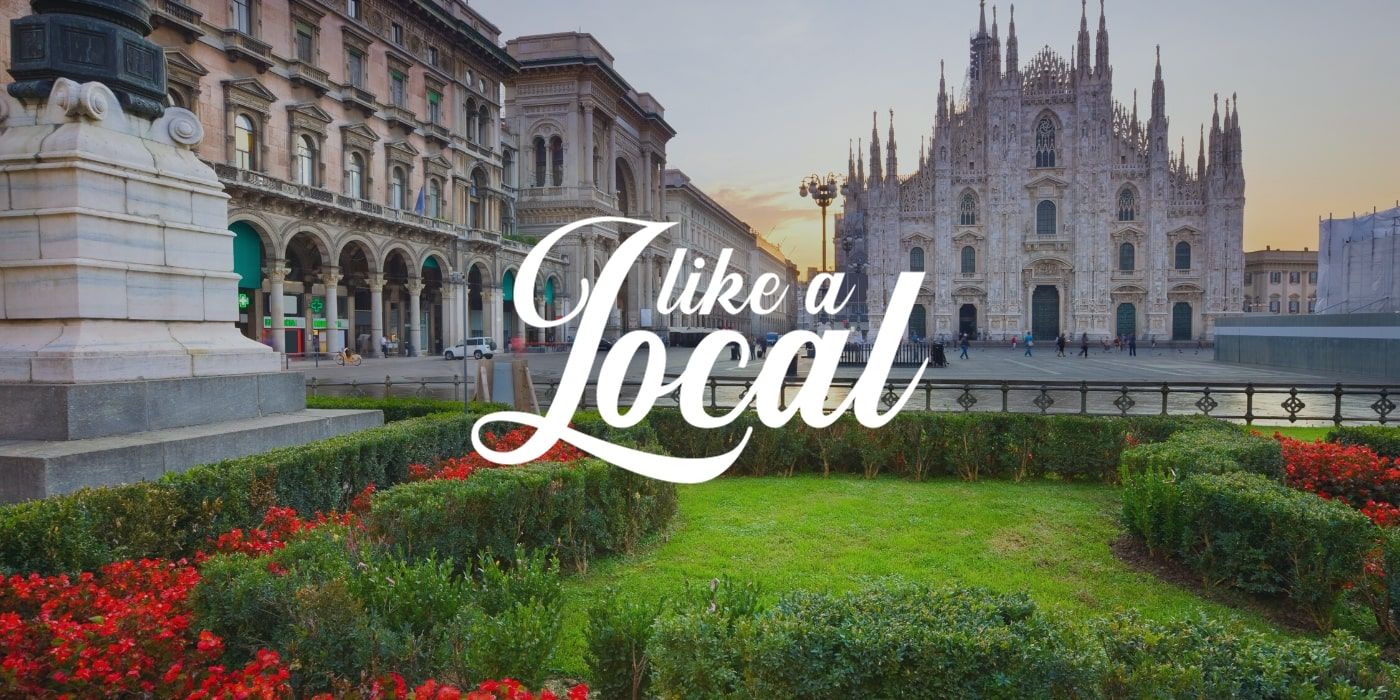
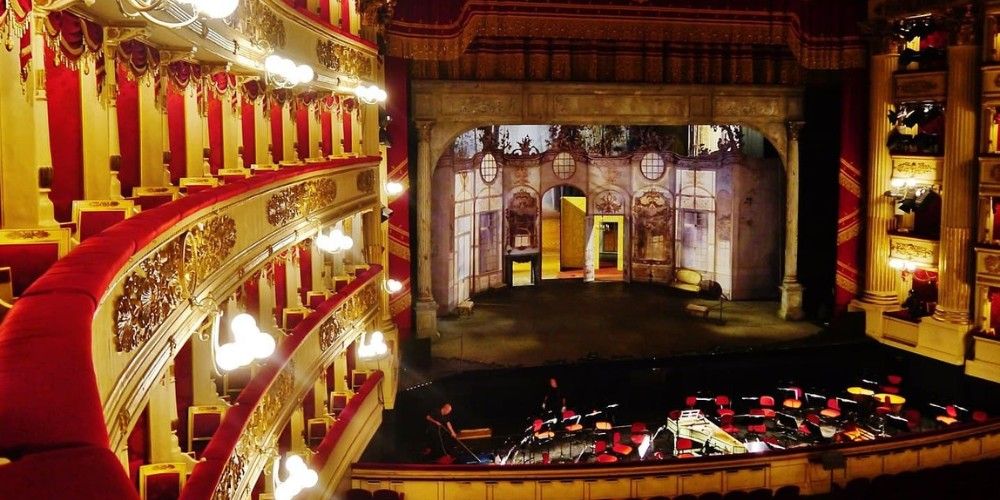
Fabrizio Mariani
Do you want to visit Milan like a local? Then check out 10 things to do to live the city like a true Milanese.